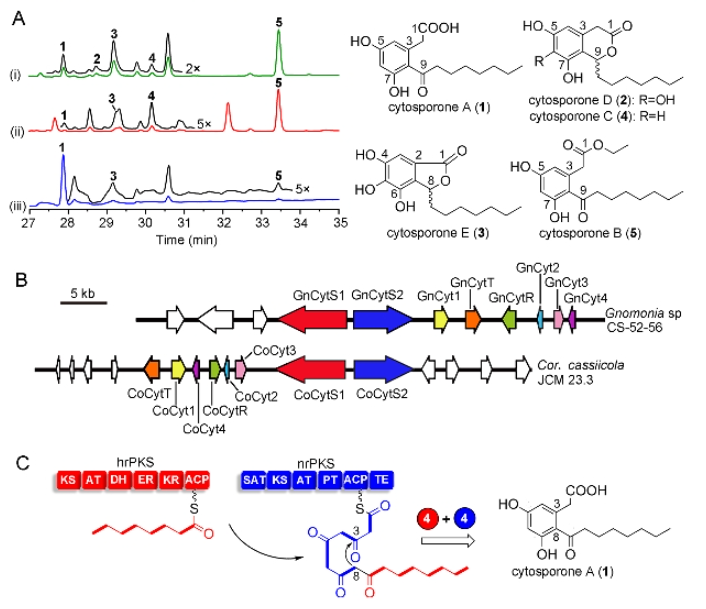|
Abstract:
Polyketides with the isochroman-3-one pharmacophore are rare among fungal natural products as their biosynthesis requires an unorthodox S-type aromatic ring cyclization. Genome mining uncovered a conserved gene cluster in select leotiomycetous fungi that encodes the biosynthesis of cytosporones, including isochroman-3-one congeners. Combinatorial biosynthesis in total biosynthetic and biocatalytic formats in Saccharomyces cerevisiae and in vitro reconstitution of key reactions with purified enzymes revealed how cytosporone structural and bioactivity diversity is generated. The S-type acyl dihydroxyphenylacetic acid (ADA) core of cytosporones is assembled by a collaborating polyketide synthase pair. Thioesterase domain-catalyzed transesterification releases ADA esters, some of which are known Nur77 modulators. Alternatively, hydrolytic release allows C6 hydroxylation by a flavin-dependent monooxygenase, yielding a trihydroxybenzene moiety. Reduction of the C9 carbonyl by a short chain dehydrogenase/reductase initiates isochroman-3-one formation, affording cytosporones with cytotoxic and antimicrobial activity. Enoyl di- or trihydroxyphenylacetic acids are generated as shunt products, while isocroman-3,4-diones are formed by autoxidation. The cytosporone pathway offers novel polyketide biosynthetic enzymes for combinatorial synthetic biology to advance the production of “unnatural” natural products for drug discovery.

|